Not all shorts are equal—your fabric choice can make or break your workout.
From polyester to mesh and eco-friendly blends, different gym shorts materials serve different needs like breathability, stretch, support, and quick-drying performance.
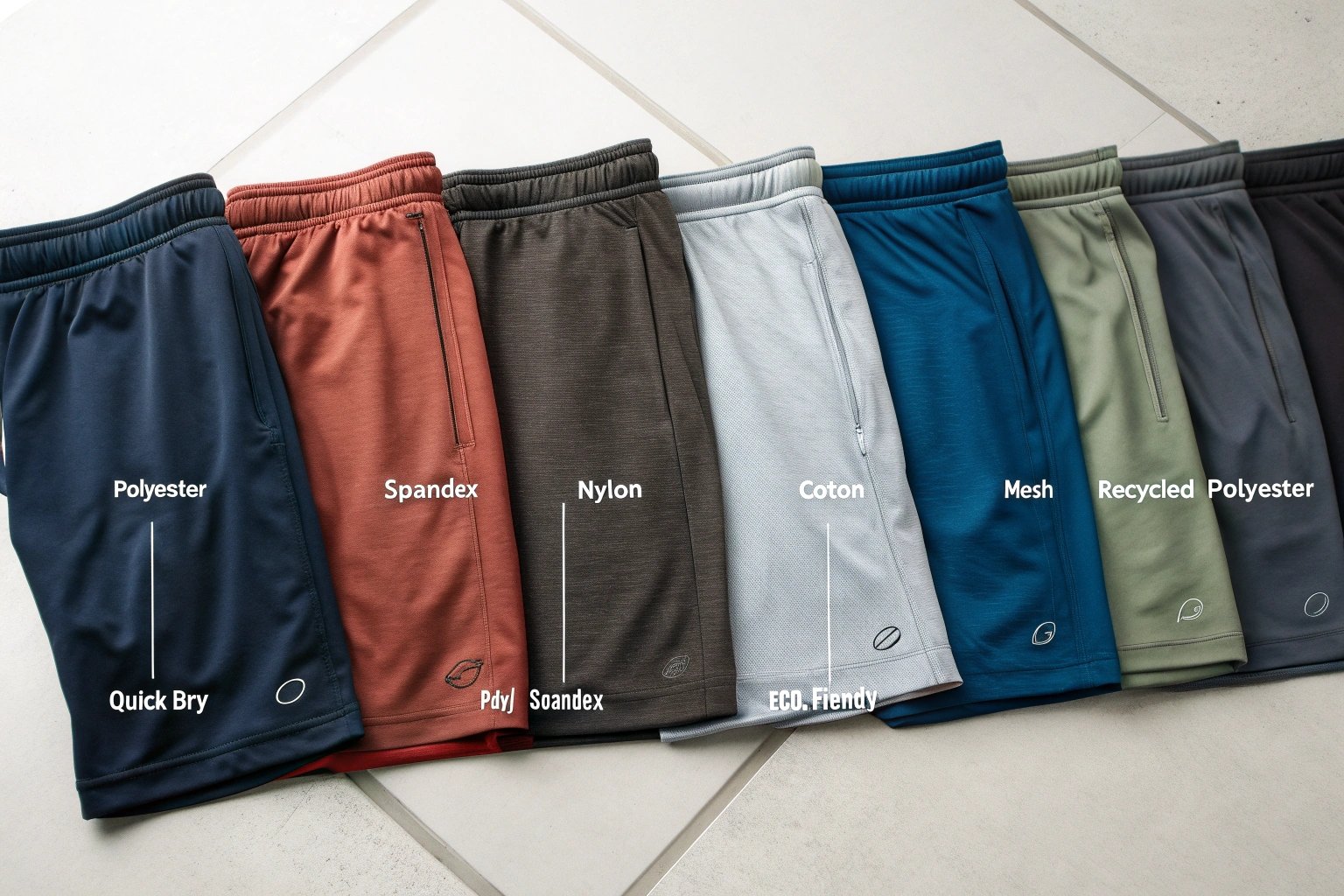
Whether you’re training for a marathon, doing squats, or just sweating it out on the treadmill, the material of your shorts matters. I’ve seen clients improve product reviews just by switching from cotton to polyester. Here are 9 materials I’ve used and recommend for specific workouts.
Polyester Gym Shorts
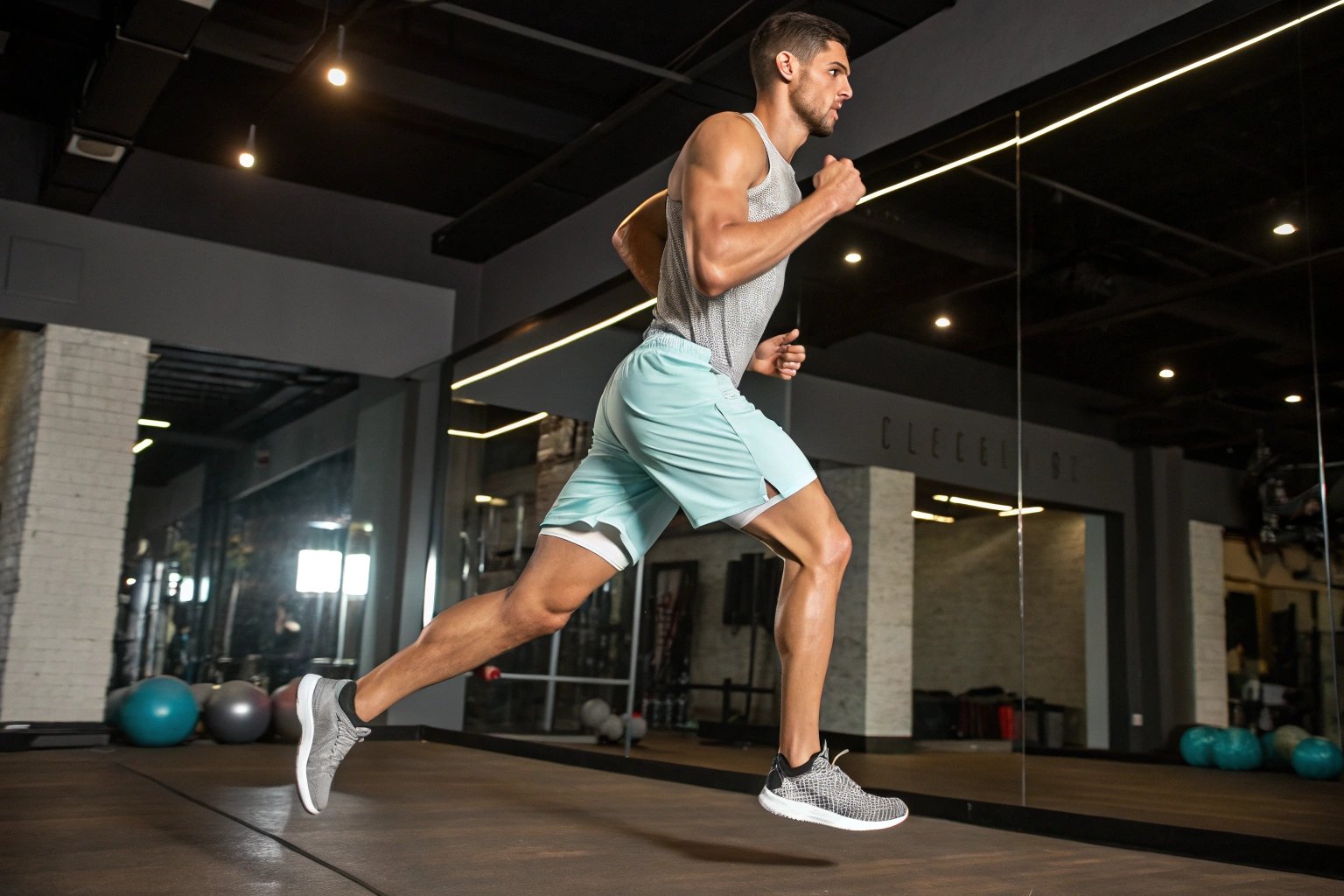
Polyester is the most common fabric in activewear, and for good reason. It’s lightweight, fast-drying, and resists wrinkles, shrinking, and UV damage. Polyester gym shorts hold shape well and are ideal for workouts that involve lots of movement or sweat—like running, circuit training, and cardio. We often blend polyester with a small percentage of spandex to increase flexibility without sacrificing strength. It’s also perfect for digital printing, which makes it a go-to for custom teamwear or branded fitness lines. The downside? It can retain odors if not treated with anti-microbial finishes. We recommend using moisture-wicking, breathable polyester mesh to improve ventilation and comfort.
Spandex (Elastane) Gym Shorts
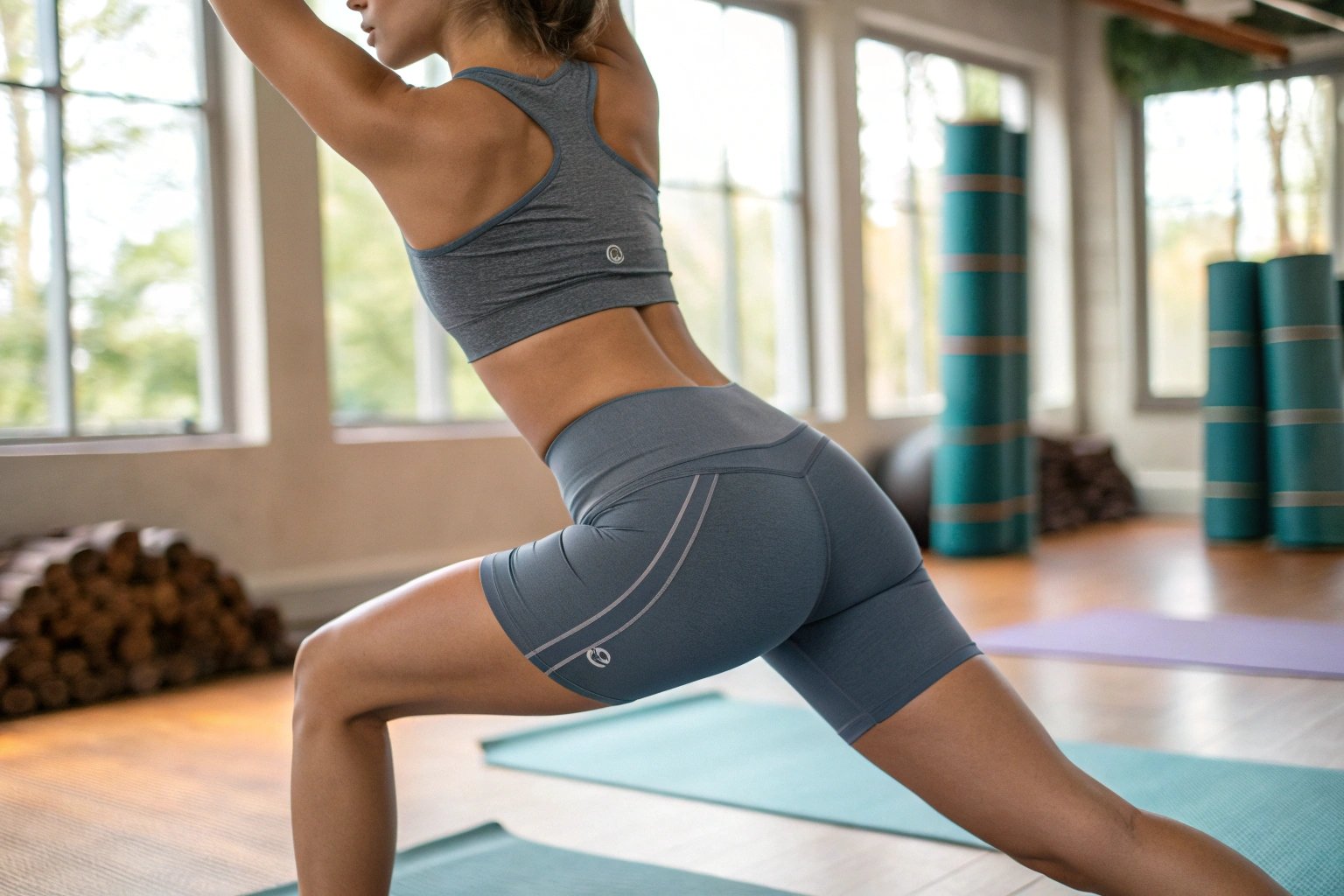
Spandex is all about stretch. Also known as elastane or Lycra, it offers up to 6 times its length in flexibility. That makes it ideal for yoga, Pilates, and dynamic movement training. On its own, spandex is too tight and shiny for outer shorts, so we typically blend it with polyester or nylon—10% to 20% is enough to add elasticity while maintaining durability. Spandex shorts hug the body, move without resistance, and stay in place during stretches or poses. However, they can be too warm in high-heat environments and are sensitive to high heat in laundering. They need gentle care and are often used in base layers or compression sets.
Nylon Gym Shorts
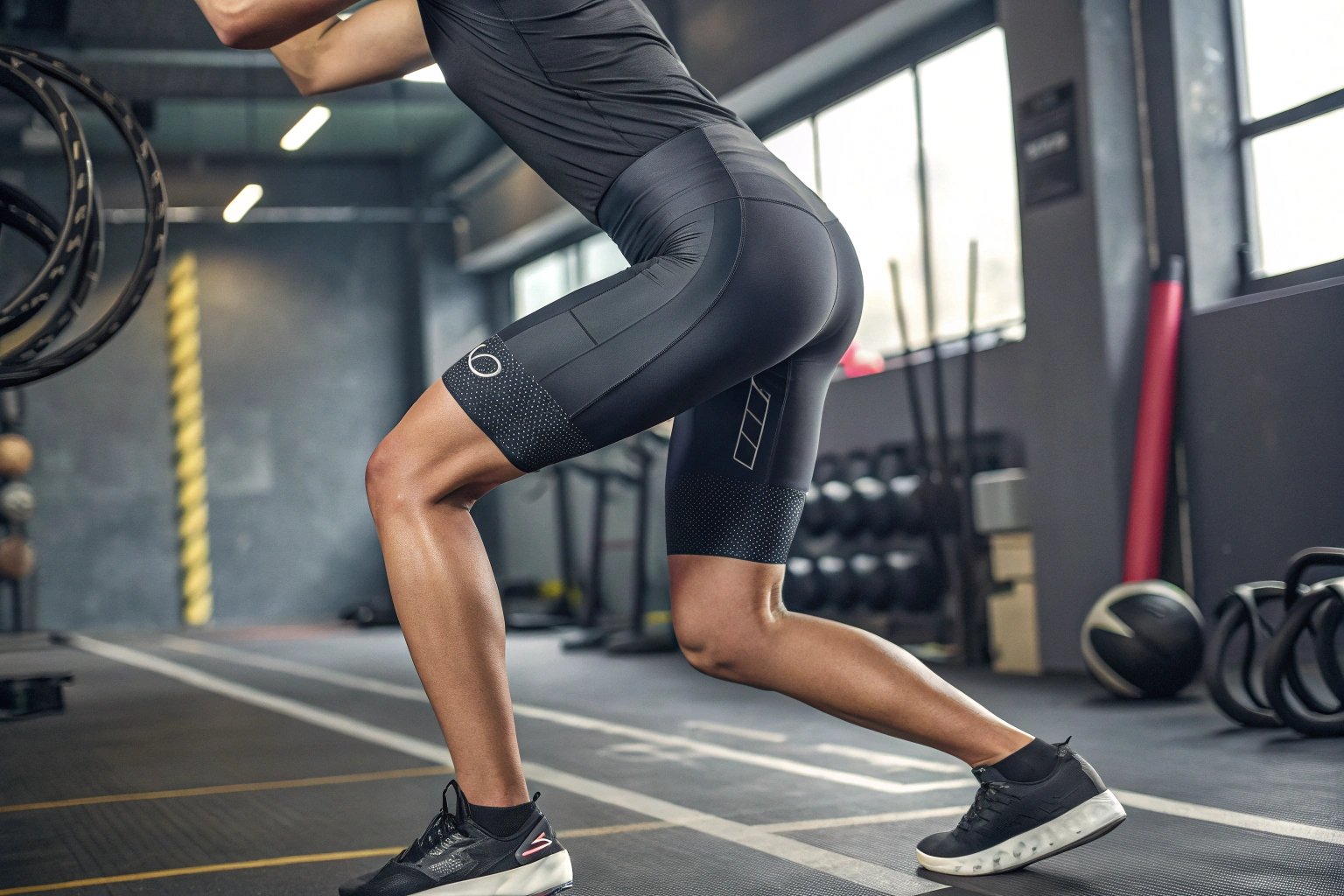
Nylon is sleek, smooth, and stronger than polyester when it comes to abrasion resistance. It also dries fast and feels soft against the skin. This makes it ideal for intense training like HIIT, indoor cycling, or boxing. Nylon has natural stretch, which improves comfort, especially in fitted designs. We use nylon in high-end women’s and men’s shorts that prioritize both feel and performance. However, it can yellow over time with exposure to chlorine or UV light and usually comes at a higher price. For customers who want a premium experience, nylon delivers a lightweight yet tough solution that lasts through long-term use.
Cotton Gym Shorts
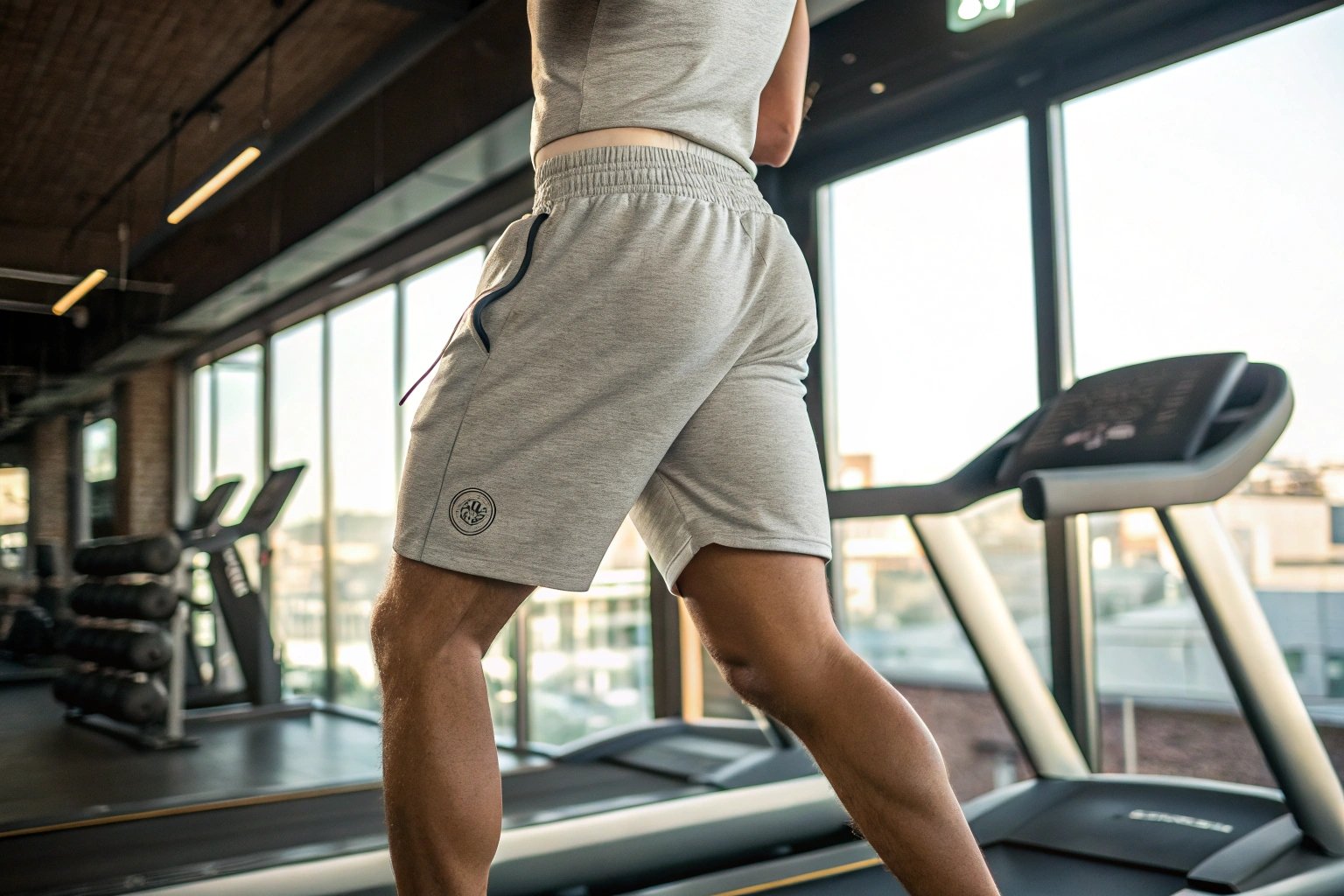
Cotton remains popular for one reason: comfort. It’s breathable, soft, and skin-friendly. However, for high-intensity workouts, 100% cotton shorts can be problematic. They absorb sweat instead of wicking it, which leads to discomfort, heaviness, and even chafing. We recommend cotton for low-sweat routines like weight training, warm-ups, or walking. For better performance, we use cotton-poly blends that retain the softness but dry faster. In fashion-forward gymwear, cotton is often used for its relaxed look and drape. Just make sure customers know it’s not ideal for sprints or spin class.
Mesh Gym Shorts
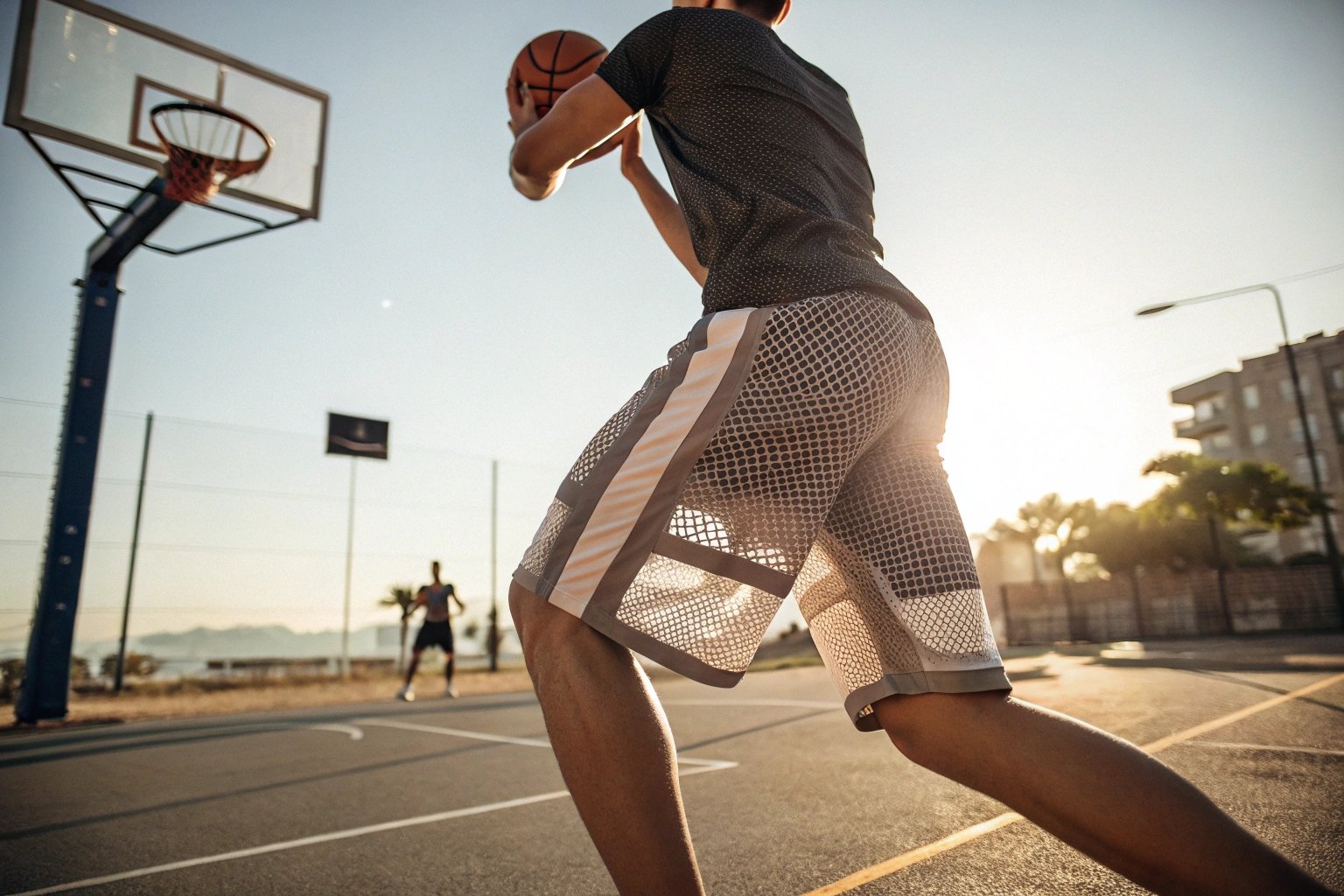
Mesh is all about ventilation. It’s made with an open-weave knit that allows maximum airflow and sweat evaporation. Mesh shorts are popular in basketball, soccer, and hot climate training. We typically use polyester mesh or add mesh panels into standard shorts to increase breathability. One challenge is that full mesh shorts can be see-through—so we always use a built-in liner or thicker gauge. Lightweight, fast-drying, and cheap to produce, mesh is a favorite among entry-level and performance-focused brands. Its only drawback is that it’s not very durable in rough training environments unless reinforced.
Recycled Polyester Gym Shorts

Recycled polyester is becoming a new standard, especially for sustainable fitness brands. It’s made from post-consumer plastic like water bottles and delivers the same stretch, color retention, and quick-drying performance as virgin polyester. GRS certification ensures the material is traceable and responsibly sourced. We use it in everything from yoga shorts to gym sets, and clients love the eco credentials. There’s little visual difference compared to traditional polyester, but the sustainability story boosts brand value. One caution: recycled yarn can sometimes have slight texture inconsistencies, so quality control is essential.
Compression Blend (Nylon-Spandex) Gym Shorts

Compression blends are made to support the muscles and reduce fatigue. These shorts are tight, form-fitting, and used either as outerwear or base layers. The fabric is usually a high-percentage nylon-spandex mix, offering four-way stretch and pressure to key muscle groups. Ideal for running, CrossFit, or recovery workouts, these shorts improve circulation and reduce vibration during intense movement. They require technical construction, including flatlock seams and gussets to avoid chafing. We often add anti-odor finishes for hygiene. Though not everyone likes the snug feel, athletes and performance-driven users swear by them.
Quick-Dry Poly/Spandex Gym Shorts
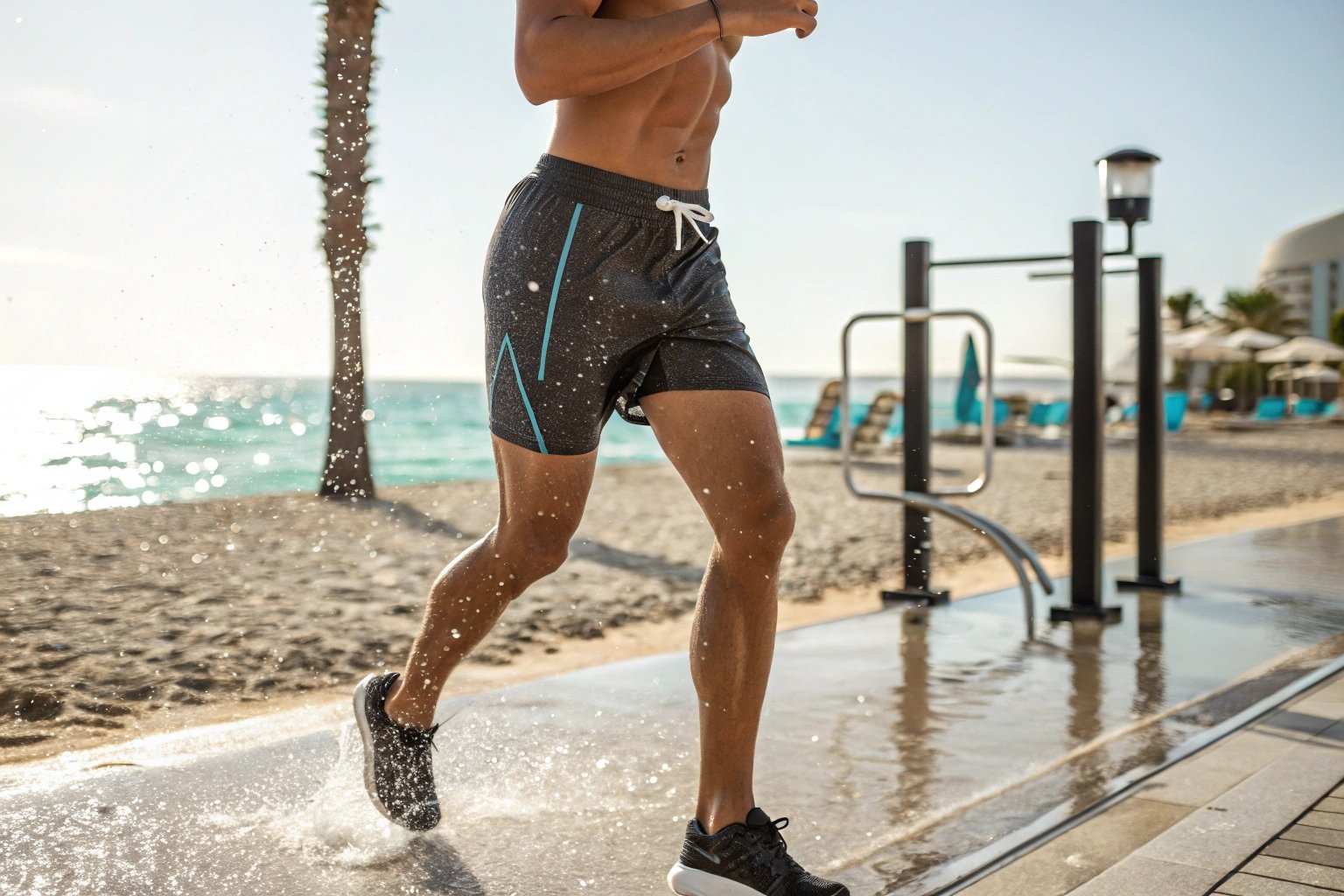
These are engineered for versatility—think gym-to-beach or workout-to-errand transitions. Quick-dry poly-spandex blends usually include DWR coatings or bonded mesh to repel water and dry fast. These are ideal for hybrid training, outdoor fitness, or travel. We use them in resort collections and tropical markets where workouts often involve water. Stretchy, stylish, and lightweight, they offer good performance in both wet and dry environments. One thing to check is the drying time after heavy soaking, as cheaper coatings may lose effectiveness. For premium options, bonded seams and laser cuts enhance comfort and durability.
Poly-Cotton Blend Gym Shorts
Blending polyester with cotton creates an all-purpose fabric that’s comfortable and easy to care for. These shorts feel softer than pure poly but dry faster than cotton. We use them in athleisure pieces, warm-up shorts, and fitness fashion collections. This blend is excellent for general workouts, walking, and travel. The fabric is more breathable than pure poly and more durable than 100% cotton. Customers love the natural look and feel, especially in lifestyle-focused collections. We often brush the surface or use French terry constructions to add value and increase price points.
Which Material Works Best for Which Workout?
Each fabric has a sweet spot—it’s all about matching function with movement.
Polyester and nylon are great for cardio and general training, while spandex blends suit mobility workouts, and cotton or blends work for slower sessions.
| Fabric Type | Best Workout Use |
|---|---|
| Polyester | Running, circuit training |
| Nylon | HIIT, cycling, functional |
| Spandex Blend | Yoga, mobility |
| Cotton | Weightlifting, casual gym |
| Compression Blend | Running, endurance sports |
| Mesh | Basketball, summer workouts |
| Quick-Dry Spandex | Pool workouts, travel gym |
We advise clients to select materials not just by price or feel, but by how each one performs under specific movement and climate conditions. For example, nylon performs better than polyester when quick-drying is important and you want a smoother, high-performance surface. On the other hand, cotton works great when you’re not generating heavy sweat—like lifting or warming up. Compression blends offer medical-level support during long runs or rehab, while poly-spandex is a flexible all-rounder that works well in multi-discipline gyms. In hotter markets, mesh and quick-dry styles outperform everything else, even if they look less structured. Choosing materials by use case first—not fashion—is the best way to reduce returns and improve customer loyalty.
How Does Fabric Affect Sweat Management?
It’s not just comfort—moisture control changes the entire workout experience.
Polyester and nylon dry quickly, while cotton retains sweat. Blended fabrics offer a middle ground, and mesh boosts ventilation.
We’ve field tested shorts under different humidity and temperature settings, and the results are clear: polyester and nylon-based fabrics outperform natural ones in every fast-paced session. Cotton can get heavy, cold, and clingy after just 15 minutes of cardio. Blends help bridge the gap. A poly-cotton mix may not be as fast-drying as pure polyester, but it still performs better than 100% cotton and feels more comfortable off the mat. For basketball or HIIT in hot weather, mesh is unbeatable—it allows constant airflow and prevents overheating. Compression blends not only wick moisture but also prevent chafing. For brands, selecting the right sweat-management fabric is key to fewer bad reviews, fewer returns, and more customer satisfaction over time.
Conclusion
No two workouts are the same—and neither should your gym shorts be. Choose your material based on movement, moisture, and what your brand stands for.

